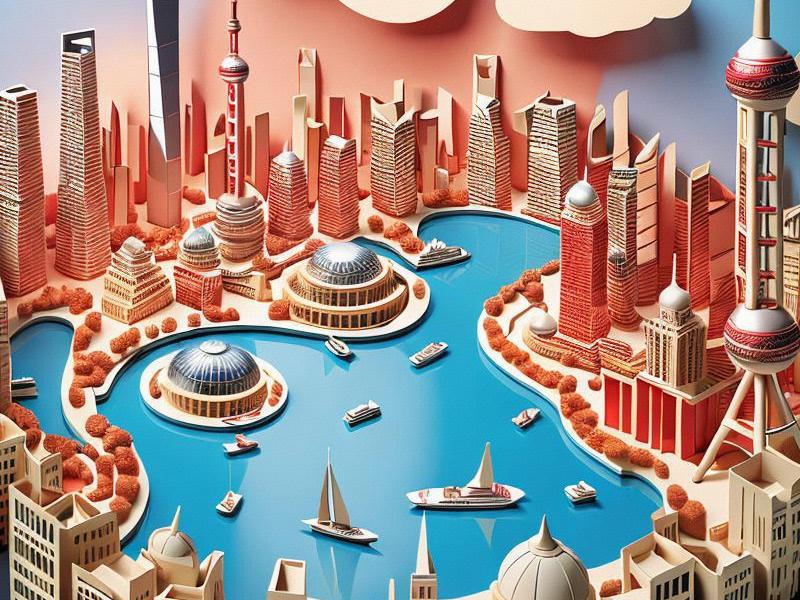Shanghai's Renaissance: A Journey Through the City's Modern Transformation
⏱ 2025-05-02 18:09 🔖 爱上海娱乐联盟
📢0℃

Shanghai, often referred to as the "Pearl of the Orient," stands today as a testament to the power of urban transformation. Once a modest fishing village on the banks of the Huangpu River, Shanghai has risen to become one of the world's most dynamic and influential cities. This article embarks on a journey through the city's modern renaissance, exploring its architectural splendor, cultural fusion, and economic prowess.
The architectural landscape of Shanghai is a visual symphony of old and new. The Bund, a historic waterfront area, offers a glimpse into the city's colonial past with its grandiose buildings from the early 20th century. These structures, with their Art Deco and Gothic facades, stand in stark contrast to the futuristic skyscrapers that now dominate the skyline. The iconic Oriental Pearl Tower, with its shimmering spheres, and the Shanghai Tower, the tallest building in China and the second-tallest in the world, are symbols of the city's ambition and innovation.
The transformation of Pudong, once a rural area on the eastern side of the Huangpu River, is nothing short of extraordinary. Pudong's skyline is now a showcase of modern architecture, with landmarks such as the Jin Mao Tower, the Shanghai World Financial Center, and the futuristic Lujiazui Finance and Trade Zone. This area has become the financial heart of China, attracting multinational corporations and international businesses.
Culturally, Shanghai is a melting pot of traditions and modernity. The city is renowned for its vibrant art scene, with galleries, theaters, and music venues that host a diverse array of performances and exhibitions. The Shanghai Museum, housed in a stunning classical Chinese building, is a treasure trove of Chinese art and history, attracting millions of visitors each year.
阿拉爱上海 The city's culinary scene is equally diverse, reflecting its history as a port where goods and cultures from around the world have converged. From traditional Shanghainese dishes like xiaolongbao (soup dumplings) to international cuisines, Shanghai offers a feast for the senses. The French Concession, with its tree-lined streets and charming cafes, is a popular spot for both locals and tourists seeking a taste of Shanghai's cosmopolitan lifestyle.
Shanghai's role as an economic hub cannot be overstated. It is the largest city in China and a key player in the global economy. The city's port is one of the busiest in the world, handling millions of containers annually. Shanghai's stock exchange is a major financial market, and its free trade zones have made it a center for international trade and investment.
The city's rapid development has not been without challenges. Issues such as urban sprawl, environmental concerns, and the preservation of historical sites are at the forefront of urban planning efforts. However, Shanghai continues to innovate and adapt, striving to balance economic growth with sustainability and cultural heritage.
One of the most ambitious projects in this regard is the construction of the Zhangjiang Hi-Tech Park, a hub for research and development in science and technology. This area is home to numerous high-tech companies and research institutions, contributing to Shanghai's reputation as a global innovation center.
爱上海419论坛
Environmental initiatives are also a significant part of Shanghai's modernization. The city has invested heavily in green technologies and sustainable urban planning. The Huangpu River cleanup project is a prime example, transforming the river into a cleaner and more scenic waterway that enhances the quality of life for residents and visitors alike.
Culturally, Shanghai is embracing its heritage while looking to the future. The city has launched various initiatives to preserve its historical architecture and cultural traditions. The renovation of historic neighborhoods like Tianzifang, a former textile factory district turned art and design enclave, showcases how old and new can coexist harmoniously.
Shanghai's educational institutions are also playing a crucial role in the city's transformation. Universities and research centers are fostering innovation and attracting talent from around the world. The city's commitment to education and research underscores its dedication to becoming a global leader in science, technology, and the arts.
上海花千坊419 The people of Shanghai are the heart of the city's renaissance. Their resilience, adaptability, and entrepreneurial spirit have been instrumental in driving the city's development. The cosmopolitan nature of Shanghai is reflected in its diverse population, with people from all over China and the world contributing to the city's vibrant culture.
Shanghai's modern transformation is not just a story of economic growth but also of cultural enrichment and environmental sustainability. The city's ability to blend tradition with innovation, and to address the challenges of urbanization, serves as a model for other cities around the globe.
As Shanghai continues on its journey of modernization, it remains a beacon of hope and opportunity. The city's story is one of determination and vision, a testament to what can be achieved through hard work and a commitment to progress. Shanghai's renaissance is not just a chapter in the city's history but a blueprint for the future of urban development.
In conclusion, Shanghai's transformation is a remarkable example of how a city can evolve and thrive in the modern era. Its architectural marvels, cultural diversity, and economic achievements make it a city of global significance. As Shanghai looks to the future, it continues to set the standard for urban development, proving that the past and the future can coexist in harmony.
Shanghai’s Fintech Renaissance: Where Bund Architecture Hosts Blockchain Revolution【外滩18号的秘密:百年建筑里的爵士复兴】Shanghai 4450: Quantum Nightlife Nexus and the Galactic Entertainment Singularity《夜上海的华丽转身:从百乐门到外滩十八号》《夜上海的三个瞬间:从礼查饭店到复兴艺术中心》Shanghai’s Quantum Nightlife: Where Imperial Gardens Host Blockchain-Powered Revelries【钢与梦的交响:上海天际线的百年叙事】Shanghai’s Green Renaissance: Where Ancient Waterways Fuel Quantum Innovation【灶披间到智能厨房:上海弄堂里的烟火进化史】Shanghai 4550: Quantum Delta Renaissance and the Galactic Sustainability Matrix

